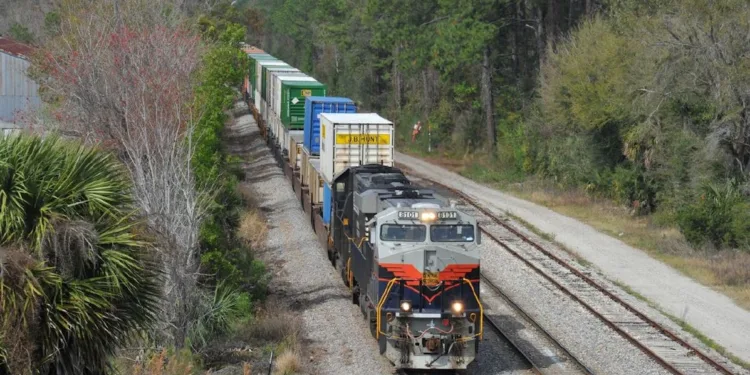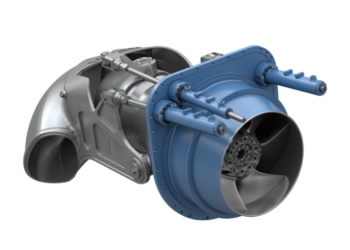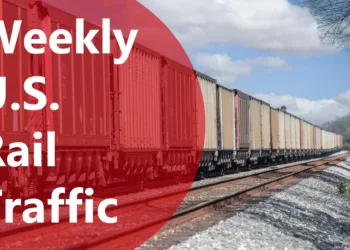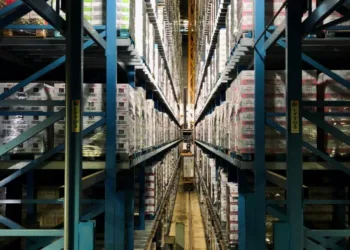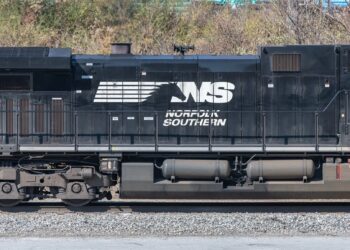Norfolk Southern touted efficiency gains, strong service levels, and safety improvements as third-quarter revenue fell short of expectations and competitive pressure ratcheted up by BNSF and CSX.
“Norfolk Southern delivered another quarter of strong results on safety, service, and productivity through a dynamic freight market,” Chief Executive Mark George said in a release Thursday, after the close of markets. “The entire Thoroughbred team pulled together to serve our customers, achieve an all-time record in fuel efficiency, delivered on key productivity initiatives, and executed a noteworthy land sale that will ultimately deliver rail volumes for years to come. I’m proud of the way our team is performing with discipline and focus — driving results and strengthening our foundation for long term success.”
Adjusted for the impact of expenses related to the February 2023 derailment in East Palestine, Ohio, as well as merger-related costs and restructuring, the railroad’s operating income increased 2%, to $1.13 billion, as revenue grew 2%, to $3.1 billion. Earnings per share, also adjusted, increased 2%, to $3.30.
The adjusted operating ratio was 63.3%, down from 63.4% a year ago.
Earnings for the Atlanta-based railroad (NYSE: NSC) were released the same day as those of Union Pacific (NYSE: UNP), its partner in a proposed $85-million merger that if approved would create the first transcontinental freight railroad. The companies have said they could submit their formal merger application as soon as Oct. 29.
The financial results included the September sale of the 152-acre Mustin Yard site adjacent to the Port of Philadelphia for $90 million.
Overall volume was flat for the quarter. Merchandise traffic was up 6%, but intermodal was down 2% and coal volume declined 5%.
Norfolk Southern’s traffic outlook was mixed, and the railroad said it expected BNSF and CSX’s (NASDAQ: CSX) responses to the proposed UP-NS merger to hurt its domestic, non-premium intermodal volumes.
The BNSF-CSX intermodal alliance, which was announced in August and links the Southeast and Southwest, contributed to the decline in NS intermodal volume beginning in September.
“We started to see some of the revenue erosion from competitor reactions to the merger announcement,” George said on the railroad’s earnings call. “We expect the impact to grow in the fourth quarter and continue to be a challenge over the near and medium term.”
What’s vulnerable to a BNSF-CSX shift is primarily traffic in the Southeast, he said.
There’s a figurative moat around the rest of Norfolk Southern’s domestic intermodal franchise. First, half of the railroad’s J.B. Hunt intermodal volume originates and terminates on its own network. Second, in many markets the railroad’s route and terminal footprint can land freight closer to consumers than CSX.
“That really can’t be replicated anywhere,” Chief Commercial Officer Ed Elkins said.
As for domestic transcontinental traffic, NS and UP have the shortest, fastest route between the Southeast and Southwest by virtue of the 302-mile Meridian Speedway, the joint venture with Canadian Pacific Kansas City that links UP at Shreveport, La., with NS at Meridian, Miss.
NS also has terminal capacity in the Carolinas, Florida, and Georgia. “So, over time, we’re confident that cargo owners are going to make the right decision about where their freight’s routed,” Elkins said.
Revenue also fell short due to customer growth forecasts that failed to materialize. As revenue falters, NS has increased its 2025 productivity target by $25 million, to $200 million.
Chief Operating Officer John Orr said NS is on pace to exceed its cost-reduction goals thanks to fluid operations and productivity gains, like handling a 4% increase in gross ton-miles with 3% fewer employees on the payroll.
The carrier tamped down train recrews by 19% during the quarter, Orr said, and reduced the number of host-related delays to Amtrak trains by 26%.
Fuel efficiency improved 5%, setting a new quarterly record, while operational and service metrics largely remained stable compared to a year ago.
The railroad’s key safety metrics improved. The personal injury rate declined 7.8% compared to 2024, while the train accident rate improved 27.7%.
“We’re running a really good railroad right now, despite the uncertain macro environment that’s ahead, and obviously the increasing competitive pressures. So our top line may be volatile going forward, but we are absolutely committed to safety, to service, and maintaining our cost structure,” George said. “And we are going to fight like hell over every available unit and dollar. Rest assured, there’s a lot of opportunity on the horizon with our proposed merger with UP, and that’s going to yield huge benefits to our customers, as well as our country.”
Subscribe to FreightWaves’ Rail e-newsletter and get the latest insights on rail freight right in your inbox.
Related coverage:
First look: Norfolk Southern Q3 earnings
Union Pacific profits rise on operational efficiency, pricing gains
First look: Union Pacific Q3 earnings
Freight locomotive sales power Wabtec earnings
The post Norfolk Southern revenue falters in Q3 appeared first on FreightWaves.



